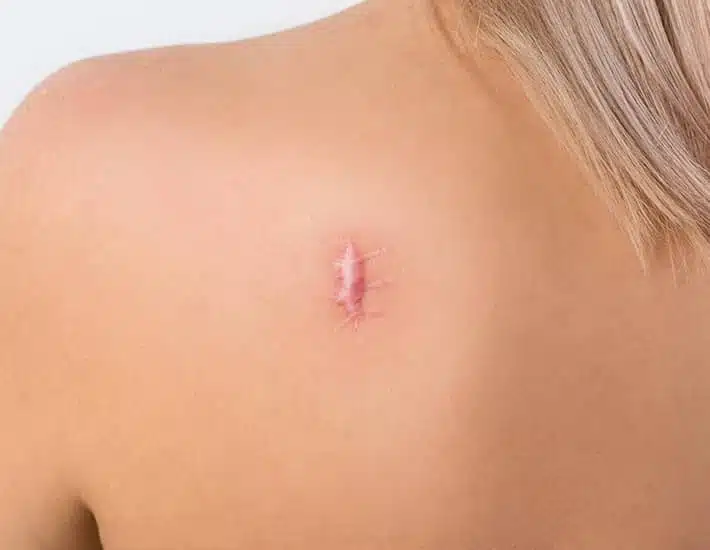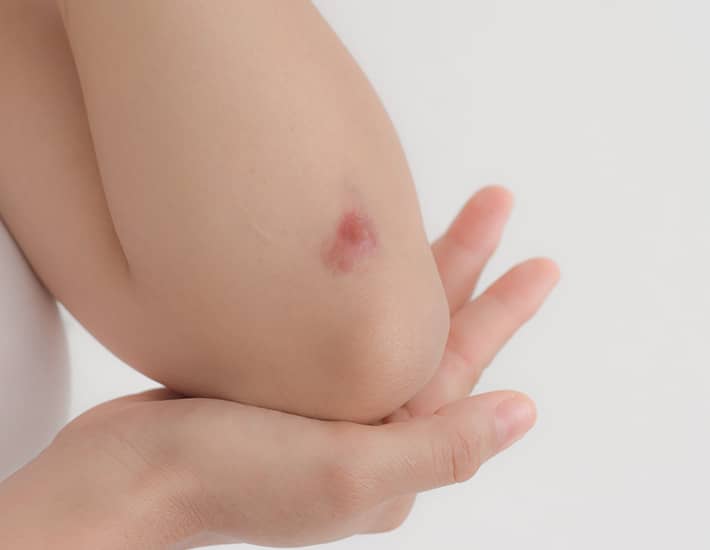Keloids are a type of scar tissue and they occur at an injury site. They also form due to inflammation, acne, folliculitis, burns, infections, tattoos, skin scratches, blisters, and at incision sites after surgery. At The Keloid Plastic Surgery Center, we offer a variety of options for the removal of keloids and treatment to prevent a recurrence.

What is
What is a Keloid?
A Keloid is a type of scar that grows outward and is raised. Appearance varies based on location. It could be round on the ear but on the chest, it could appear flat and wider.
Keloids can grow on the face, scalp, ear, neck, back, chest, upper or lower extremities, buttocks, and even in the shoulder.
It could be purple, pink, or brown in color, and vary in texture. Keloids usually form after an injury to the skin or as a result of a surgical incision.

Consultation
Schedule a Consultation
At The Keloid Plastic Surgery Center, our goal is to provide our patients with the expert care they need. Dr. Roberto J. Mendez and Dr. Gabriel Salloum are board-certified plastic and reconstructive surgeons who combined have over 37 years in practice. They have treated thousands of patients since they started their practices, and among those are patients with severe and complex keloids. Contact our office today to schedule a consultation.
Commonly Form
Where Do Keloids Commonly Form?
Keloids form as a result of an injury to the skin. When the skin is damaged, the body attempts to repair the area through the formation of scar tissue. For some, scar tissue continues to form in the area even after the injury to the skin has healed. As the scar tissue begins to raise up and extend beyond the borders of the initial injury it forms a keloid. It is secondary to the abnormal deposition of collagen.
Keloids can form as a result of a cut or puncture to the skin. This can be from the result of an accident or due to piercing, tattoos, injections, insect bites, and even surgical incisions. Because of this, keloids can form on any part of the body. However, they most commonly form on areas like the earlobes, cheeks, shoulders, back, and chest. It is common for keloids to form after patients have undergone heart surgery that requires incisions to be made along the chest.

Diagnose
How do you diagnose Keloids?
Keloid scars form months after an injury. It could take up to a year for the keloid to become noticeable. When they grow, you will experience itchiness, pain, or discomfort. They form because of excess collagen produced by the body after an injury.
There are several factors that increase the possibility of developing keloids. Keloids occur more often in people between 10 and 30 years of age. People of Asian, African, and Hispanic descent are more likely to get them. Hormonal changes can also cause the growth of keloids.
If you think you have the risk factors to develop keloids, you should find out what you can do to avoid getting them. If you see a keloid growth around an injury, see a doctor. Keloid growths can become itchy and reduce joint flexibility.

